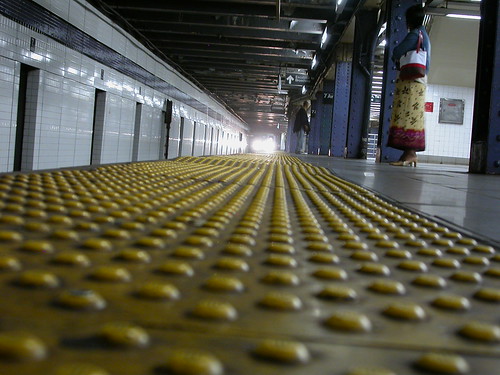Just the other day, I took the MTA’s new CFO to task for his gloom-and-doom scenario involving the MTA’s financial picture and tax revenue. Well, today, I have better news: Because of the increase in taxes collected by the MTA, the planned 2008 fare increase may be off the table.
With the MTA collecting over $184 million more than planned, The Daily News speculates that this surplus could cover the gap that the fare increase was supposed to meet. Pete Donohue has more:
Since January, key real estate taxes have generated nearly $600 million for the MTA – $184 million more than anticipated.
If that pace continues, those taxes would fill the $800 million gap the Metropolitan Transportation Authority had projected for 2008.
“God bless the housing market,” Gene Russianoff of the Straphangers Campaign said. “It helped generate a $1 billion surplus in 2006 and, hopefully, it will hold off a fare hike in 2008.”
(By the way, I’m going to count up how many MTA articles appear in the New York press and in how many of those Gene Russianoff appears. My guess is upwards of 90 percent.)
So that’s good news. The MTA, with some massive projects on tap, is facing a better-than-expected financial picture. Of course, the MTA officials aren’t quite as quick to celebrate, and I don’t blame them. The last thing they want to do is say the fare increase is off the table and then watch as the real estate market tanks in August. In fact, an MTA spokesman said exactly that.
“Revenues from real estate taxes are extremely volatile and it’s too early in the year to know where revenues will end up,” MTA spokesman Jeremy Soffin said. “We will not consider a fare increase until we have exhausted all other options.”
The final decision on a fare increase will come in December. Hopefully, the real estate market will stay healthy and robust until then. I wouldn’t mind sticking with my $76 monthly Metrocard. Enough of my hard-earned money goes to the monthly card as it is.


 The MTA is notorious terrible with money. Maybe they don’t have enough and need to raise the fare. But, oh wait, an accounting error reveals the Authority had more than it thought. Maybe this project will come in under budget; maybe not.
The MTA is notorious terrible with money. Maybe they don’t have enough and need to raise the fare. But, oh wait, an accounting error reveals the Authority had more than it thought. Maybe this project will come in under budget; maybe not.




 So the MTA
So the MTA  With apologies to
With apologies to